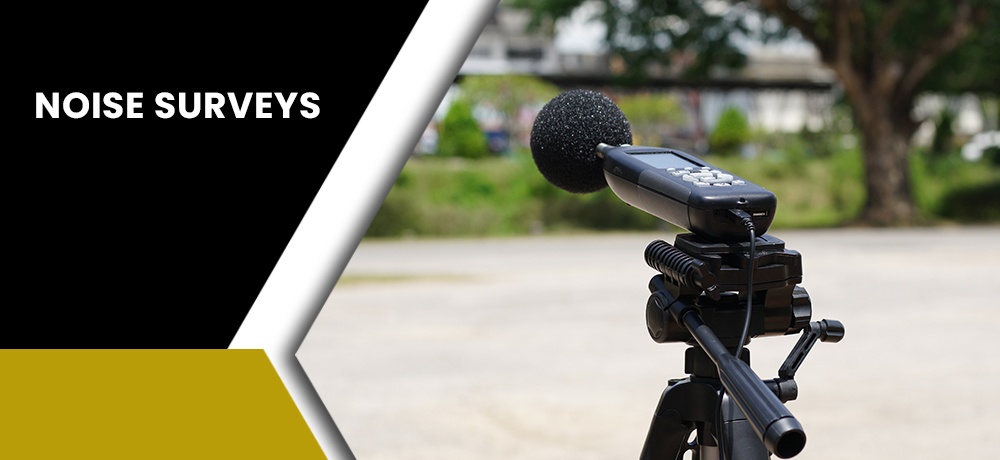Noise Surveys

DEFINITION OF A NOISE SURVEY
A noise survey takes noise measurements throughout an entire plant or section to identify noisy areas.
Noise surveys provide very useful information which enables us to identify:
- Areas where employees are likely to be exposed to harmful levels of noise and personal dosimetry may be needed.
- Machines and equipment which generate harmful levels of noise.
- Employees who might be exposed to unacceptable noise levels.
- Noise control options to reduce noise exposure.
- Variability in noise levels during different operating conditions
- Impact on noise level from modifications or changes in operations
- Noise survey is conducted in areas where noise exposure is likely to be hazardous.
Noise level refers to the level of sound. A noise survey involves measuring noise level at selected locations throughout an entire plant or sections to identify noisy areas. This is usually done with a sound level meter (SLM). A reasonably accurate sketch showing the locations of workers and noisy machines is drawn. Noise level measurements are taken at a suitable number of positions around the area and are marked on the sketch. The more measurements taken, the more accurate the survey is. A noise map can be produced by drawing lines on the sketch between points of equal sound level. Noise survey maps, like that in Figure 2, provide very useful information by clearly identifying areas where there are noise hazards.
NOISE MEASUREMENT CONSIDERATIONS
Before taking field measurements, it is important to determine the type of information required.
The person making the measurement must understand:
- The purpose of measurement: compliance with noise regulations, hearing loss prevention, noise control, community annoyance etc.
- The sources of noise, and times when the sources are operating.
- The temporal pattern of noise - continuous, variable, intermittent, impulse.
Locations of exposed persons. - Conditions during both a typical and atypical shift (noise sources, activities, shift length, etc.)
The initial measurements are noise surveys to determine if:
- Noise problem exists.
- Further measurements are needed.
The second step is to determine personal noise exposure levels; that is, the amount of noise to which individual employees are exposed. If the workplace noise remains steady, workers are stationary throughout the shift, and measurements are representative of a typical day, the noise survey data can be used to determine if there is a potential exposure to harmful noise levels and if additional measurements are required. However, noise dosimetry (such as personal noise exposure measurements) is necessary if the workplace noise levels vary throughout the day or if the workers are fairly mobile.